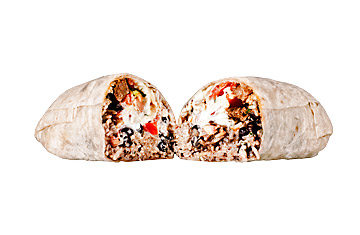
Fast-Casual Nation. To compete with the likes of Five Guys, the Big Three burger empires are raising their game.
There's a Wendy's in Wichita, Kans., where you can choose between a bacon portabella Black Label burger (with mushroom sauce and Muenster cheese), an apple pecan chicken salad, a Monterey ranch crispy-chicken sandwich and an Asiago ranch chicken club. The lineup bears little resemblance to Wendy's burgers-and-fries menu of even a few years ago--and it's a big reason Wendy's was able to edge out Burger King for the first time last year to become the country's No. 2 hamburger chain, according to numbers released last month by food-industry research firm Technomic.
Fast-food joints are redefining themselves. They're placing a sharper focus on ingredients and transforming their dining rooms into Starbucks-style hangouts to compete with so-called fast-casual restaurants like Five Guys, Chipotle and Panera Bread. "Fast casual has raised the bar," says Darren Tristano, executive vice president of Technomic. "When your competitors are doing this, you don't want to lose relevance."
Burger King is belatedly launching its own makeover. It finally fired its bizarre king mascot last year and unveiled a line of BK Chef's Choice burgers. Taco Bell recently announced a Chipotle-esque Cantina Bell menu, while White Castle is testing three specialized menus at existing franchises: one offers beer and Southern-style barbecue, another Asian noodles; the third serves panini-style sandwiches.
But the trend dates back nearly a decade, starting with the one fast-food chain that's still beating everybody else. In 2002, McDonald's suffered its first quarterly loss in almost half a century. Many factors were at play: overly rapid expansion, complaints about cleanliness and customer service, and negative publicity following the publication of Eric Schlosser's muckraking Fast Food Nation. The following year, McDonald's began slowing the number of new stores it opened so it could focus on revitalizing its menu and responding to the attitudinal shift toward premium, nutritional foods.
That's why when you walk into a McDonald's today, you see an Angus Mushroom & Swiss Burger, a Fruit 'N Yogurt Parfait and a McCaf Iced Caramel Mocha alongside the Dollar Menu and Big Macs. Since the shift, McDonald's sales have only gone skyward: total revenue increased from $50.8 billion in 2004 to $77.4 billion in 2010.
"To be able to sell Angus burgers at that price"--about $4--"and not lose anything in terms of speed and consistency is pretty shocking," says Gloria Cox, a principal at the Cambridge Group, a growth-strategy consulting firm. "McDonald's has shown it can be done, and that may cause others to say, 'If they can do it, maybe we should give it a try too.'"
McDonald's was also guarding against the rise of fast-casual restaurants, whose customer pitch is to offer much higher quality for a slightly higher price. Sales at Five Guys, which began in 1986 with one location in Arlington, Va., and now has close to 1,000, grew by 38% from 2009 to 2010 alone. Sales at Chipotle increased 20.7% during the same period. (McDonald's bought a majority stake in the chain in 1999 but divested seven years later.) Panera Bread boosted revenue 24% from 2007 to 2010, at the height of the recession.
